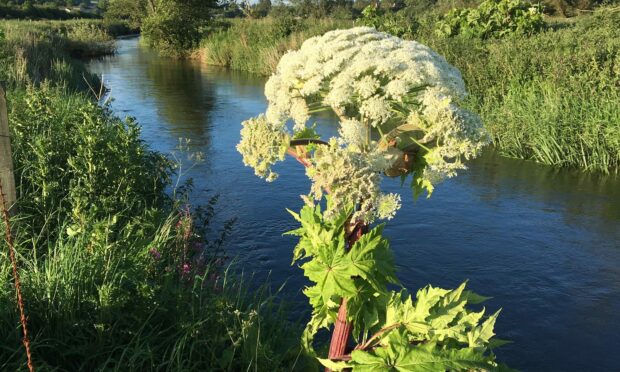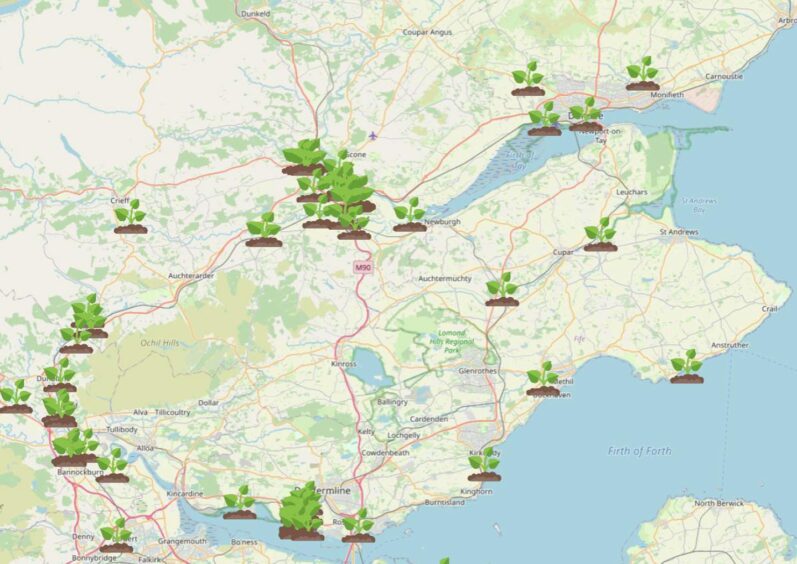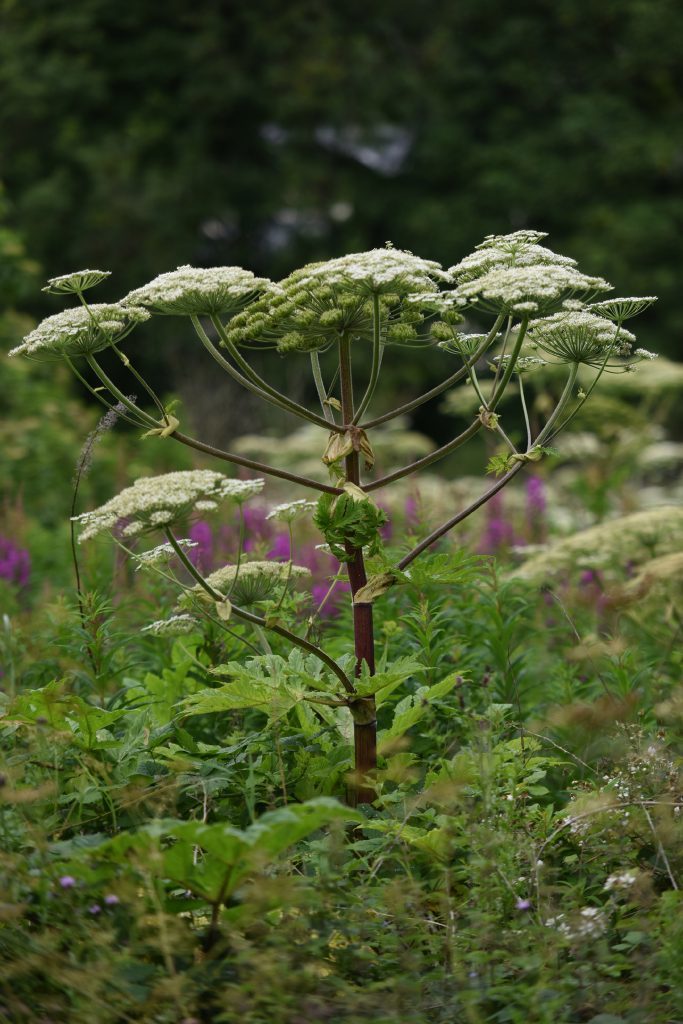Government environment agency NatureScot has issued warnings to avoid giant hogweed ahead of the summer holidays.
The plant can cause severe skin blisters and even blindness.
But where are the hotspots in Tayside and Fife?
Our information shows where there has been a confirmed finding of hogweed in Tayside or Fife. However, that may have been subsequently removed by professionals.
Nevertheless, these are the areas in which to remain cautious when out and about.
Dundee
Giant hogweed is most common in Dundee along the Dighty Burn.
It has also been discovered at Riverside Nature Park.
In the city centre, a sighting was also confirmed near the Kieller Centre.
David Young is north east manager for Complete Weed Control.
He said the most common environment for giant hogweed is along rivers and burns.
“We’ve had to remove a lot of it along the Dighty Burn over the years.
“The seeds can travel downstream and it takes over an area when it becomes established, to the expense of ground-cover species.”
Angus
The invasive species was recently found near Monifieth High School.
A recent discovery has also been made near the A923 at the edge of Muirhead.
Historically, the Montrose Basin was a hotspot as well as along the South Esk heading towards Brechin.
Fife
David and his team have had to remove giant hogweed from Strathmiglo, near Falkland.
“There was a lot growing there,” he said.
Another Fife hogweed hotspot is along the Lyne Burn on the outskirts of Charlestown.
And a sighting was recently confirmed along the Brankholm Burn on the eastern edge of Rosyth.
Perth & Kinross
David said he has had to remove a lot of the plant along the Earn and Almond rivers in rural Perthshire.
He said there are “various spots” along the River Tay as well.
There is reported hogweed near Bellwood Riverside Park in Perth.
The data also shows smatterings of the plant along the Tay bank to the south-east of the city.
Outside of the Fair City, sightings have also been reported south of Crieff and west of Aberfeldy along the B846.
Why you should avoid hogweed
When contact is made with the skin, a toxin in the plant makes skin sensitive to sunlight.
This will cause severe blisters and burns.
David said: “It’s important people can identify it so they can teach their kids to avoid it.
“It has a thick stem, so youngsters might be tempted to break it off and use it as a toy sword.”
NatureScot invasive species policy manger Stan Whitaker said it is “relatively easy” to identify because of its two to four metre height and large white clusters of flowers up to 80cm wide.
He added: “Its leaves are very large and sharply divided and can be over one metre across while the stems are green with purple blotches and covered with bristly hairs.”
I used data from the National Biodiversity Network and WhatShed.co.uk – which has been collating findings since the government-led project Plant Tracker closed.



Conversation